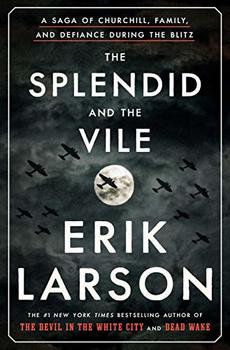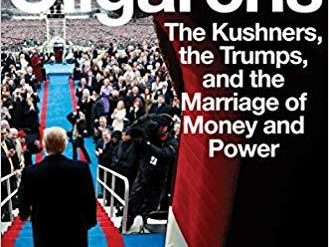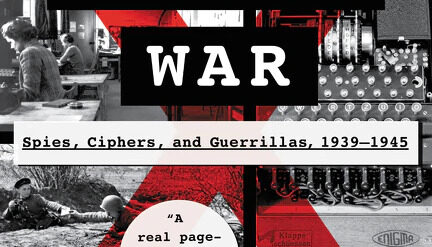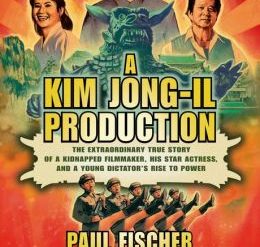
Estimated reading time: 9 minutes
At the age of sixty-five, he achieved his lifelong dream, becoming Prime Minister of the United Kingdom on May 10, 1940. Less than a year into World War II, Britain was on the brink of defeat. In The Splendid and the Vile, the brilliant nonfiction author Erik Larson gives us an intimate view of Winston Churchill in WWII. But it didn’t start off easily for him:
- The British public, its military leaders, and Churchill himself lived in fear, day after day, of an imminent Nazi invasion.
- France was barely more than a month away from surrendering to the Nazis.
- German U-boats were sinking merchant ships far faster than the country could replace them, threatening the people of the British isles with starvation.
- On the Continent, the British Expeditionary Force was encircled by German forces, retreating toward the French coast and facing almost certain annihilation.
Was an aging alcoholic up to the job?
Yet somehow the aging Prime Minister—an alcoholic with a reputation for questionable judgment—mobilized the British people despite what so many were convinced was a hopeless fight against the Nazi juggernaut. Both King George VI and some of Churchill’s colleagues in the Cabinet were skeptical that he was up to the job. Regardless, through sheer force of will and an unparalleled gift for stirring rhetoric, Churchill led his nation virtually alone in the world for eighteen months before the United States finally entered the war.
The Splendid and the Vile: A Saga of Churchill, Family, and Defiance During the Blitz by Erik Larson (2020) 546 pages ★★★★★
Churchill’s lofty rhetoric is familiar to anyone with even a passing acquaintance with the Second World War. His speeches are often quoted to this day on both sides of the Atlantic. In The Splendid and the Vile, Larson reveals what is often missing from accounts of those addresses.
The backstory for Churchill’s legendary speeches
For example, many are familiar with his ringing speech to Parliament promising to “fight in the fields and in the streets, we shall fight in the hills; we shall never surrender—” But Larson adds, “As the House roared its approval, Churchill muttered to a colleague, ‘And . . . we will fight them with the butt end of broken bottles, because that’s bloody well all we’ve got.” Larson also reports that this speech, which Churchill read on BBC Radio that evening, received little attention from the public. Many who listened thought he sounded drunk. In fact, Larson reveals, he read the speech with a cigar in his mouth.
The result was problematic. “Home Intelligence reported that only two newspapers ‘gave Churchill’s speech headline value’ and that the speech had done little to fortify the public.” But the author implies that this lack of attention was of little consequence to the Prime Minister because “the audience Churchill had mainly in mind when he crafted his speech was, once again, America.” It’s details like this that make Larson’s account so hard to forget.
How did the man manage day to day in the midst of the Blitz?
The story of Churchill’s courage and his brilliant if unorthodox leadership style is well known. What is less well known is how he managed from day to day to persist in the face of such overwhelming odds during that critical first year of his five years in office. And that’s the story Erik Larson tells, and tells so well, in The Splendid and the Vile.
Historians typically zero in on the stuff of politics and policy, and in wartime on the ebb and flow of battle. Not so Erik Larson, one of the most outstanding popular historians writing today in the English language. While all that is present in The Splendid and the Vile, Larson’s focus is on the emotional reality of life in and around 10 Downing Street during that fateful year. He vividly conveys a sense of what it would have been like to be Winston Churchill or a member of his inner circle or his family. As he writes in the book’s acknowledgments, “I set out to hunt for the stories that often get left out of the massive biographies of Churchill, either because there’s no time to tell them or because they seem frivolous. But it is in frivolity that Churchill often revealed himself.”
Private diaries cast light on Winston Churchill in WWII
Larson draws largely on diaries written by his private secretaries and his then eighteen-year-old daughter Mary. He also leans heavily on contemporaneous accounts from an official research effort called Home Intelligence and a privately organized research program called Mass-Observation. Both of the latter employed hundreds of individuals throughout society to record their observations in diaries on a daily basis. Larson offers us an intimate look at the lives they all lived while thousands of tons of German bombs rained down all around them, day after day after day, and Churchill helped set the world’s future course. And he leavens his tale with accounts of the German perspective, delving deeply into the diary of a Nazi air ace, records of Rudolf Hess‘s quixotic flight to Scotland, and reports of the clumsy antics of the Luftwaffe’s Hermann Göring. It’s a remarkable accomplishment.
“From the very start,” Larson notes, “Churchill understood a fundamental truth about the war: that he could not win it without the eventual participation of the United States.” Deservedly, then, Larson devotes special attention to Churchill’s relentless campaign to persuade President Franklin Roosevelt to resist the isolationists who hobbled him politically and come to the defense of embattled Britain. This story is well known, but Larson tells it with a light touch, revealing intimate details of the two men’s growing relationship that are often missing from scholarly accounts of the war.
A focus on Churchill’s family and his inner circle
Larson draws our attention squarely to the Prime Minister’s inner circle. These were not primarily the exalted figures who populated the War Cabinet such as Viscount Halifax, Anthony Eden, Clement Attlee, and Neville Chamberlain (at the outset), but the men who interacted with him on a daily basis and often lived with him at Chequers and Ditchley on the weekends. These were Churchill’s friends—the men in whom he confided:
- Press lord Max Aitken, Lord Beaverbrook, an intimate friend whom he pressed into service as Minister of Aircraft Production. It was Beaverbrook who bullied nearly everyone around him regardless of rank to circumvent the many bureaucratic hurdles that had kept aircraft production low. And he was wildly successful, “doubling fighter output within his first three months” on the job.
- General Hastings (Pug) Ismay, his chief military advisor. As Private Secretary Jock Colville noted in his diary, “Churchill owed more, and admitted that he owed more” to him for his aid and support “than to anybody else, military or civilian, in the whole of the war.”
- Frederick (The Prof) Lindemann, Churchill’s personal scientific advisor. The Prof was an eccentric who obsessed about clever but often unworkable ideas that seem to have captivated Churchill. In fact, the Prime Minister’s fascination with gadgets is well known and has been the subject of books, film, and television production.
His wife, Clementine Churchill, played an advisory role from to time but her suggestions were less likely to be heeded. And the Prime Minister happily spent hour after hour with the two men Franklin Roosevelt sent on special missions to confer with him: first, Harry Hopkins, and later Averell Harriman. Both became, for a time, fully fledged members of the inner circle as well.
Many others had front-row seats on Winston Churchill in World War II
Others, no doubt, considered themselves intimate with Churchill, but if Larson’s account may be believed, Beaverbrook, Ismay, and the Prof were the stalwart and indispensable men to whom Churchill most often turned for support during that first year of his time at 10 Downing Street.
Others with front-row seats convey how these men all interacted, principally private secretary John (Jock) Colville. But Larson’s account is enriched by the passages in Colville’s diary that reflect on his unrequited love for a young woman and on daughter Mary Churchill girlish preoccupations during the early months of the war. And the story of Churchill’s unhappily married daughter-in-law, Pamela Churchill, adds a fascinating dimension to the tale. (First wed to Randolph, Churchill’s spendthrift and philandering son, Pamela later married Hollywood and Broadway producer Leland Hayward, and, finally, in 1979, Averell Harriman, with whom she had had an affair in the course of the events related in The Splendid and the Vile.
The title of this stirring book comes not from Shakespeare or one of the ancients, as we might surmise, but from a passage in one of Jock Colville’s diaries: “Never was there such a contrast of natural splendor and human vileness.”
For related reading
For a different perspective on the same period, see the excellent book by historian Lynne Olson, Citizens of London: The Americans Who Stood with Britain in its Darkest, Finest Hour (The men behind the British-American partnership in WWII). You’ll find an insightful assessment of Winston Churchill in the early ways of the war at The Duel: The Eighty-Day Struggle Between Churchill and Hitler by John Lukacs (When Churchill faced Hitler alone). And for a fascinating study on some of the principals in that story, see The Daughters of Yalta: The Churchills, Roosevelts, and Harrimans, a Story of Love and War by Catherine Grace Katz (The Yalta controversy and the fate of Poland).
For an even more focused view on Churchill during the pivotal month of May 1940, see Darkest Hour: How Churchill Brought England Back from the Brink by Anthony McCarten (New insight into Prime Minister Winston Churchill).
I’ve also reviewed three other excellent books by Erik Larson:
- In the Garden of Beasts: Love, Terror, and an American Family in Hitler’s Berlin (Why the U.S. failed to speak out against the rise of Hitler’s Germany)
- Dead Wake: The Last Crossing of the Lusitania (When a U-boat sank the Lusitania and changed history)
- Isaac’s Storm: A Man, a Time, and the Deadliest Hurricane in History (The deadliest hurricane in history?)
You might also be interested in:
- 10 top nonfiction books about World War II
- The 10 best novels about World War II
- The 10 most consequential events of World War II
- 20 top nonfiction books about history
And you can always find my most popular reviews, and the most recent ones, on the Home Page.


























